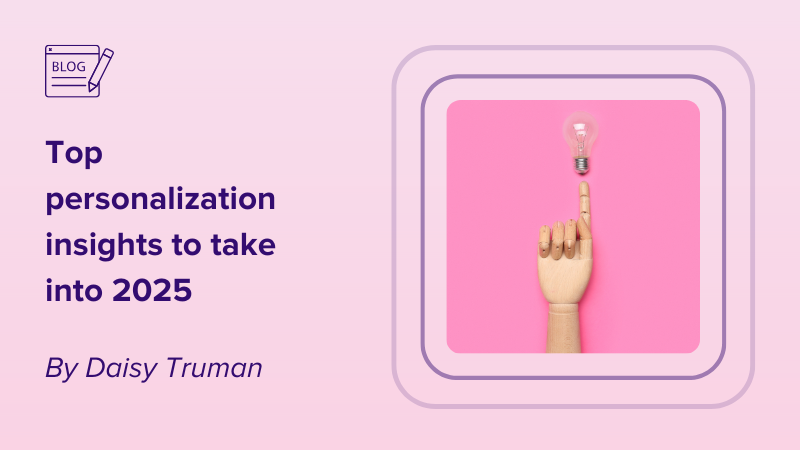We’ve been immersed in a digital world with masses of content for decades now. Information about every subject you can imagine is available at our fingertips. In the early days, we assumed that everything we read was authentic content and could be trusted as fact. But as the sources of content have multiplied and the platforms we consume content on continue to grow we are, rightly so, less trusting of the content that we’re targeted with.
Since the explosion of social media platforms like TikTok and Instagram, and the sheer capability phones give to users, self-generated content has become too easy to create. Being created by self-appointed experts has made it ever harder to decide which content and platforms can be trusted.
In both B2C and B2B worlds, we’ve become more cautious of the content and authors we can trust. We’re constantly targeted by misinformation in the form of spam and fake content. We often can’t even trust reviews unless they come from an accredited review site.
The impact of AI
With the rise of AI, content is being churned out faster than ever before, amplifying the mistrust of information that already existed. With information not fact-checked and in some instances dubious stats being used with sources missing. The content is being disregarded as readers develop trust issues, not knowing which authors and sources they can rely on. In B2C this could result in making a dodgy purchase or engaging in misleading news articles. For B2B, the impact of misinformation can lead to making poor business decisions.
The big question on everyone’s lips, is how can authors build trust and be considered a credible source? And how can they compete with the sheer volume of content out there, particularly AI generated content, to stand out from the crowd?
How to cut through the noise
The answer is quality over quantity. Instead of churning out piece after piece of mediocre content. You need to invest time and potentially a bit of budget into generating some top-notch articles that will catch the attention of your ICP’s (Ideal Customer Profiles). Helping you stand out in an overcrowded and saturated space.
‘Authenticity’ is defined by Joe Pulizzi, Content Marketing Specialist: “Authentic content is about being true to your brand’s values and creating content that reflects those values honestly and compellingly.”
Ultimately you want to become a trusted, reliable, source of the truth and help your audience cut through the noise. In turn helping you build your reputation as a thought leader in your space. According to Gartner, authenticity ranks as the third highest value US consumers identify with.


“Authenticity” ranks as third highest value US consumers identify with
Here’s your jargon-free approach to nailing authentic content:
Know your audience
The reason we create content in the first place is to engage with our prospects and customers. We want to prove that we are the experts in our field and build a reputation of trust. We want to be the ‘destination’ when it comes to finding out more about a topic or discussion point within our space.
So it makes sense that our content needs to be focused on our audience, is relevant to their pain points, needs, and provides insight. If you don’t already know your customers, it’s time to get up close and personal. Use surveys, analytics, and social listening tools to aggregate quantitative information about your customers. Then add some client calls into the mix to gather more qualitative information. Once you understand their pain points, you can plan content that targets them and helps them overcome those issues.
Consider who your decision makers and influencers are. The B2B buying cycle typically involves 6 to 10 decision makers who all play a different role in the purchase decision. Create content that appeals to each of these job titles, to get them engaged with your solution.
Here are some questions you can ask to help piece together the right content:
- What are the benefits to each teams strategy?
- Are the decision makers and product users the same people, or different?
- What content could you create aimed at users to demonstrate how easy it is to adopt or implement your product or service?
- What content do you need to create to resonate with different decision makers at different seniority levels?


How to nail authentic content
Choose your platforms wisely
With so many platforms available, it’s easy to be drawn into posting on all of them. However, depending on your brand voice and target audience, you’ll need to decide where’s best to focus your efforts. To do this you need to consider which platforms your audience use the most, and which platforms they find the most reliable.
A meme went viral in 2020, where people shared a joke about their social media profile pictures alongside each other. Here’s Dolly Parton’s version highlighting how different the platforms are in a comedic way.


Dolly Parton highlighting different social media platforms
Whilst we’d never recommend you set up a company profile on Tinder😉, any business worth its salt has profiles on the remaining three platforms in this meme. Plus X (formally known as Twitter), YouTube, and a handful of others.
Knowing what content to share
However, the type of content they post on each platform varies. This is because the audience is in a different frame of mind when scrolling their Facebook and Instagram platforms to when they’re looking at LinkedIn. Businesses can use this to their advantage and speak to different decision makers in a way that resonates with them the most.
The research you’ve completed around your audience should help you identify which platforms you should focus your attention on. LinkedIn has always been a firm favorite for B2B marketers and is where you’re likely to get the most engagement. Facebook and Instagram content will get less attention but has an important part to play in building brand awareness.
When questioning how often you should post, again it needs to match your brand values. Quality over quantity is important here too. Focus on providing human connections through reviews, testimonials, and quotes from your customers. There’s authenticity in customers sharing their good results and happy experiences with a company. Often referenced as don’t believe us, believe them content; it certainly helps a business build a strong reputation as a company you can trust.
TikTok has taken the world by storm over the last 6 years. If you do want to venture to TikTok, ensure the content remains fun, entertaining, and bite-sized. You might even want to segment your audience here and target just one or two segments that are more likely to use this platform. We’re seeing a trend that B2B businesses like Salesforce, Zoom, and Sage are regularly using the platform, but for relatable content that aligns to a current trend. Check out this article by Bazaarvoice if you want to get more involved on TikTok and you’re not sure where to start.
New ways to gather insights
AI-generated content is challenging the reliability of sources. To address this, consider conducting your own research to generate statistics. Think HubSpot’s ‘State of Marketing Trends report’, The Marketing Practices ‘Annual B2B marketing effectiveness barometer’ and B2B Marketing’s ‘The state of Martech.’
Ok ok, these are pretty big surveys that generate a colossal amount of responses, leading to masses of rich content. So, start small, reach out to prospects with a survey to get under their skin and understand them better. It’s guaranteed that HubSpot, The Marketing Practice, and B2B Marketing didn’t start out with as many participants as they now have for their first survey – plus its ok to be choosy! If your target audience is aviation manufacturers on the East Coast of America, there is no point finding out how their counterparts in the EMEA feel. Whilst it gives you food for thought and will bump up the volume of responses, it won’t provide you with true value – so stick to your target audience.
On completion of the survey, you’ll have valuable data that’s interesting for you and your prospects/customers. Sharing how other businesses in their space or sector overcome challenges and what their top priorities are can really emphasize what’s important to that sector right now and can generate a huge range of content from infographics, blogs, to full reports. The key thing is it’s authentic, referenced correctly, and from a reliable source. Which plants you firmly in the spotlight as a thought leader in your space.
Reliable sources
It’s also ok to use data from other sources, as long as they are reputable. In the same way we link to trustworthy websites to improve our SEO position on Google. Which according to Fire&Spark is still very much relevant for SEO in 2024. When referencing and quoting stats, it’s important to use reliable, trust worthy sources and wherever possible provide the link back to the original article. After all, if you can’t reference a statistic, it could just be pulled from thin air. Forbes, Harvard Business Review, Forrester, and Gartner are all renowned ‘go to’ sources in B2B marketing. Consider who they would be for your own sector and how you could use them to improve the authenticity of your content.
In B2B SaaS, HubSpot, Salesforce, Marketo, Survey Monkey, and Monday are considered to be trustworthy and reputable. Making them all great sources to reference. Always be sure you’re adding value though, there is little worth in just regurgitating what they already said. In B2B we crave human to human interaction. Therefore, adding your own take or experience to the element referenced is extremely valuable. As you grow your reputation as an authentic content creator, this value will increase.
Now you have all this great content, what do you do with it?
Good point. You’ve taken the time to get to know your audience. Segmented your content by decision maker and aligned the content to their needs. Tailored your content based on the platform you’re posting on. All whilst being true to your brand. You’ve done your own research, gathered up statistics surrounding their pain points and combined this with intel from other reliable sources. How do you use all this insight to get the right messaging in front of the right people?
Use personalized website experiences for your prospects and customers to provide depth and clarity amongst the chaos. When these high valued prospects come to your website, present them with the information they need to see how your product or service helps to overcome their challenges and pain points.
B2B website personalization tools allow you to segment your website visitors ensuring they receive the right information. You can segment by industry, location, company size, funnel stage and much more. It’s a great way to present even more authentic content to your prospects or customers, making the web visit tailored to their needs.
FAQ’s
How can AI-generated content be distinguished from authentic content?
AI-generated content tends to stand out from organically created content due to the tone of voice used and sometimes unusual phrasing. The content created can often lack creativity and contextual understanding.
Are there specific industries or niches where TikTok is more effective for B2B businesses?
If you are considering using TikTok, you need to make sure that the content posted follows your own brand guidelines. Businesses that allow for creativity and behind the scenes content are likely to get higher engagements.
What are the recommended B2B website personalization tools for tailoring content to specific audiences?
Webeo is a recommended B2B website personalization tool that allows you to create website experiences based on business characteristics, funnel stage, persona, and previous behavior on site. This increases onsite conversion, engagement, and more leads from the website.




